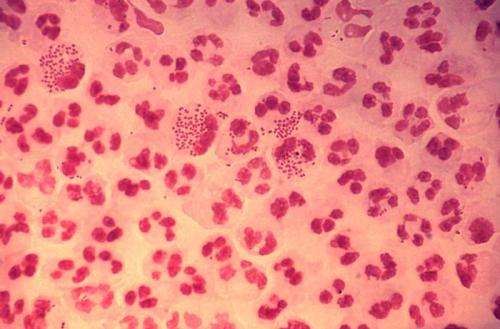Tinderrhoea: Tinder fuelled STI boom amongst young Adelaide heterosexuals?

Gonorrhoea transmission rates have significantly increased amongst young Adelaide heterosexuals, raising the question of whether this could be due to the use of dating apps like Tinder.
A new study found annual gonorrhoea transmission rates increased 153% during the 2012-2017 reporting period, with the publication in Sexually Transmitted Diseases identifying the bacterial infection is highly concentrated in specific areas, amongst low income populations and within high-risk populations.
Dr. Emma Miller from the College of Medicine and Public Health at Flinders University says the results signify a new epidemic of gonorrhoea, separate from ongoing epidemics in high risk groups, in young heterosexuals engaging in casual or unprotected sexual activities, which could indicate long term increases in HIV and STI transmission if behavioural trends continue.
"The significant increase in gonorrhoea notifications in 2016 and 2017 in our study were found to be associated with young heterosexuals. Changes in sexual behaviour have occurred with the emergence of dating apps which have become a part of single life during emerging adulthood," says Dr. Miller.
"The rapid emergence of internet technologies has facilitated the identification of potential partners in convenient geographic proximity and resulted in a change in social rules which govern young people's sexual behaviour, thus increasing the likelihood of STI transmission."
Young people aged between 15 and 29 continue to be significantly impacted by STIs in Adelaide, and engaging in prevention, testing and treatment presents a public health challenge. The crude infection rate in 2012 was 21.9 per 100,000 population, increasing to 74 per 100,000 population by 2017.
"Casual, and often condomless, sex initiated through the use of dating apps is emerging as a risk factor for STI transmission."
Dr. Miller says the changing epidemiology of gonorrhoea in Australia has highlighted the need for a detailed examination of the social and behavioural drivers of risky sexual behaviour.
"Gonorrhoea is a significant public health concern and better understanding of transmission networks is required, particularly as gonorrhoea in other jurisdictions has been shown to spread geographically and within and between sexual networks even with extensive public health interventions in place."
More information: Sally L. Ellis et al. Changing Epidemiology of Gonorrhea in Adelaide, South Australia, Sexually Transmitted Diseases (2020). DOI: 10.1097/OLQ.0000000000001162




















